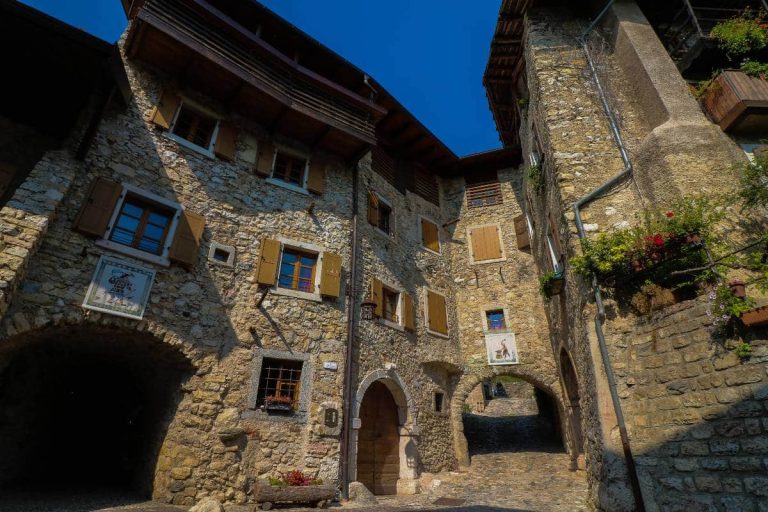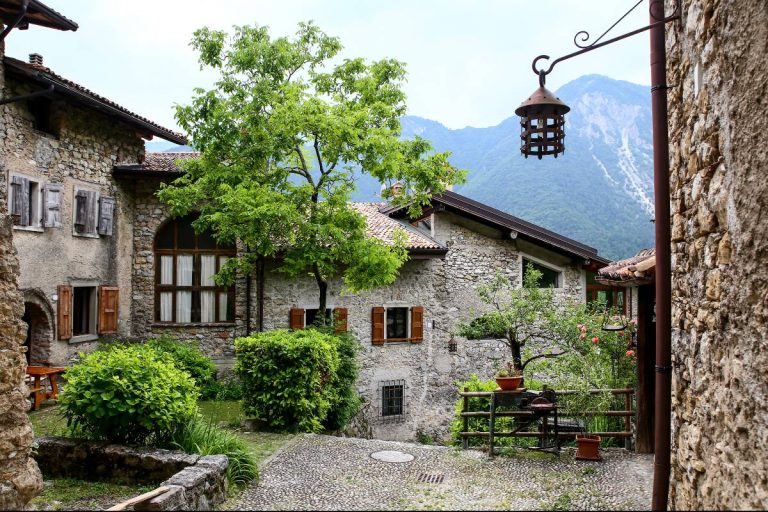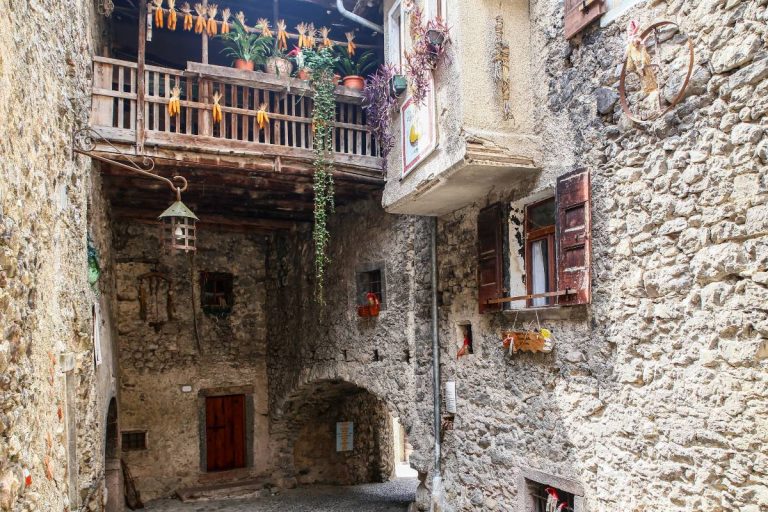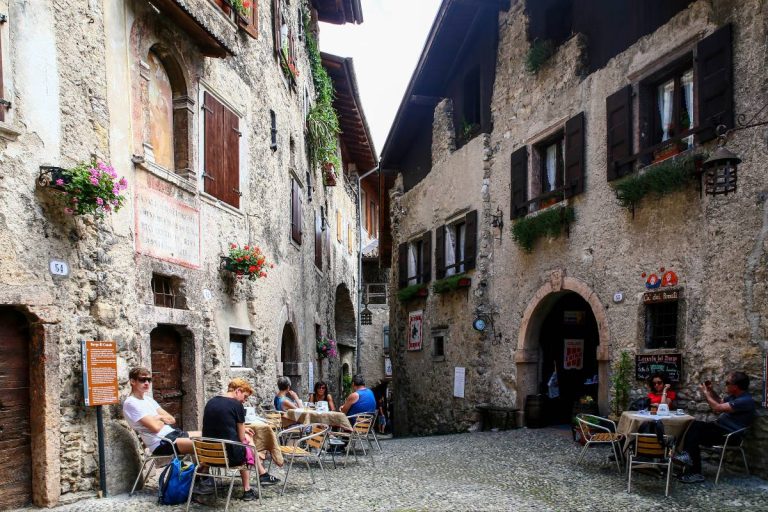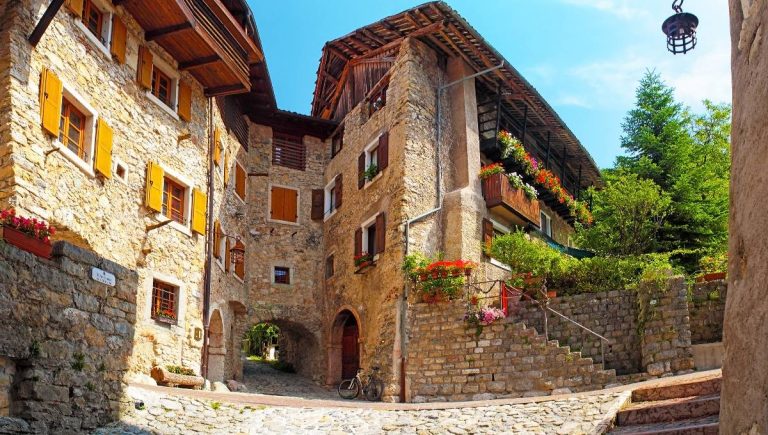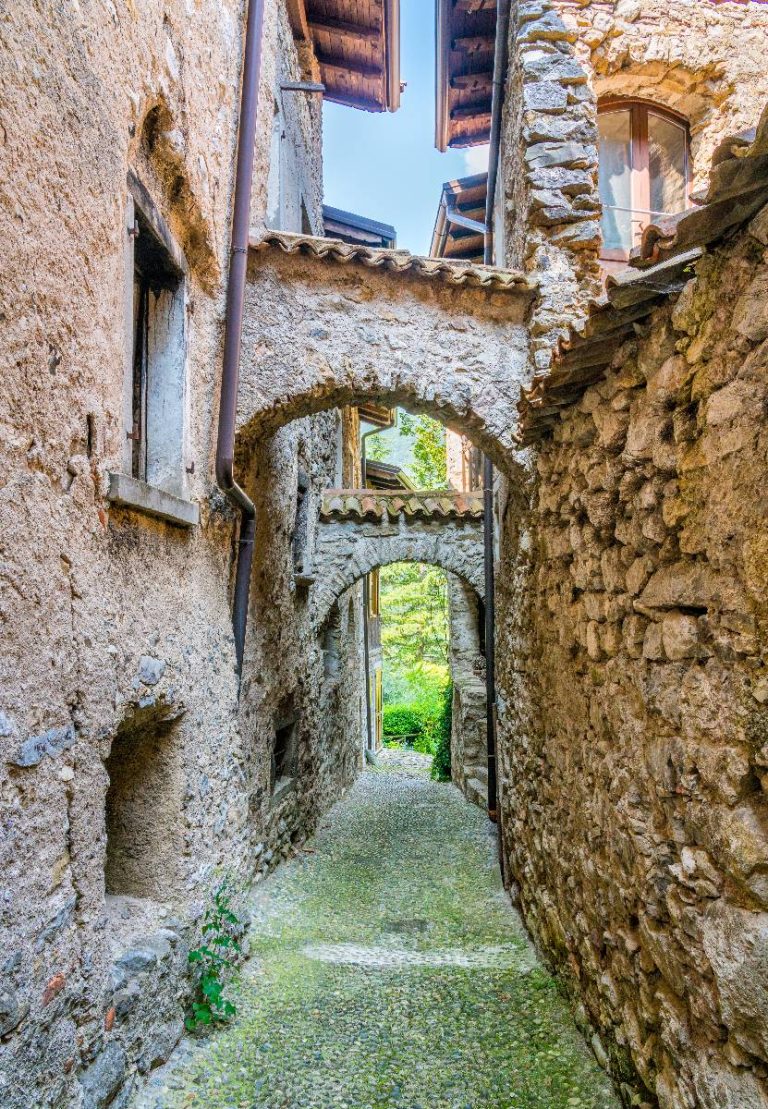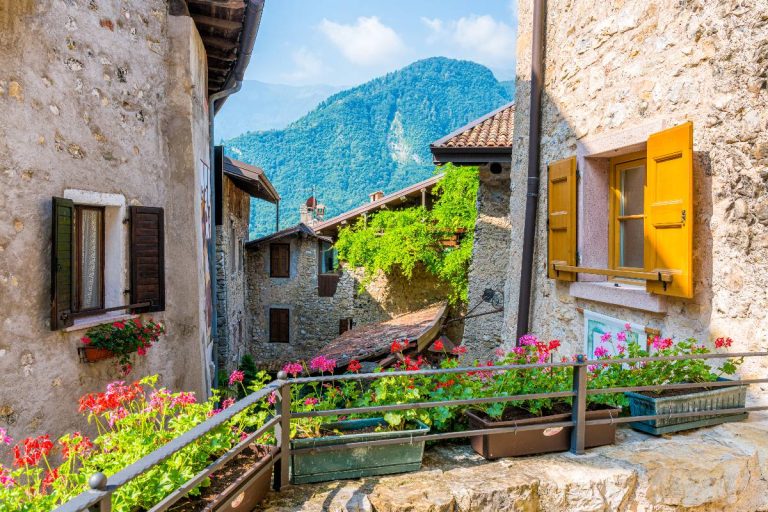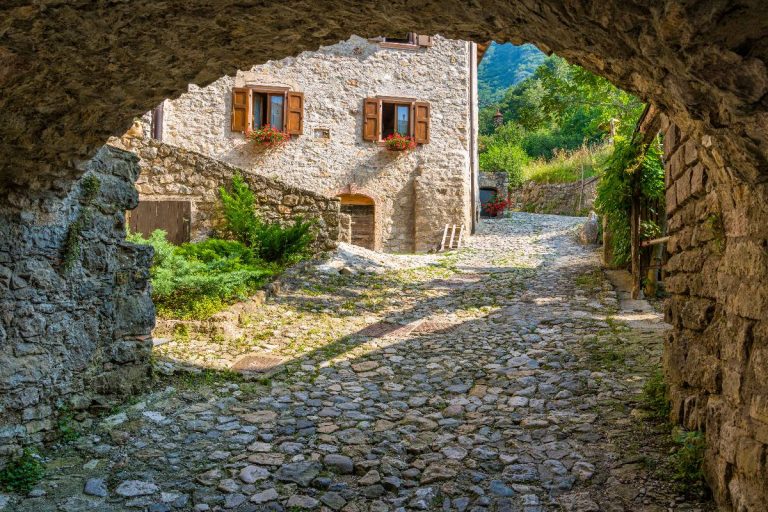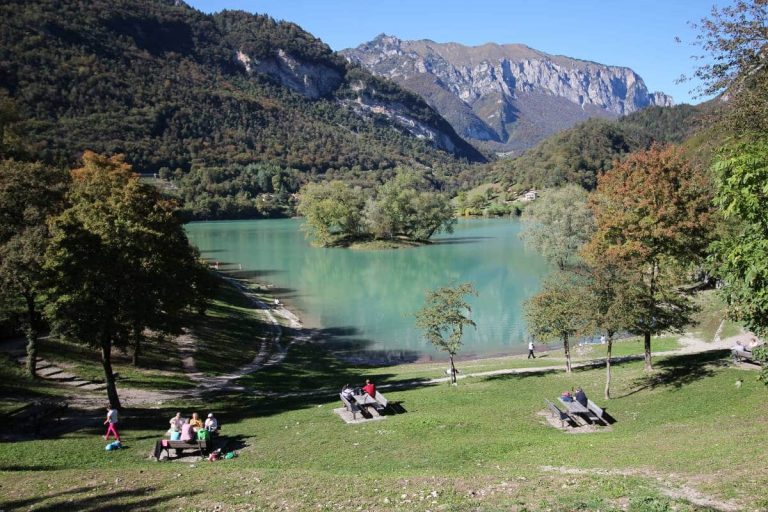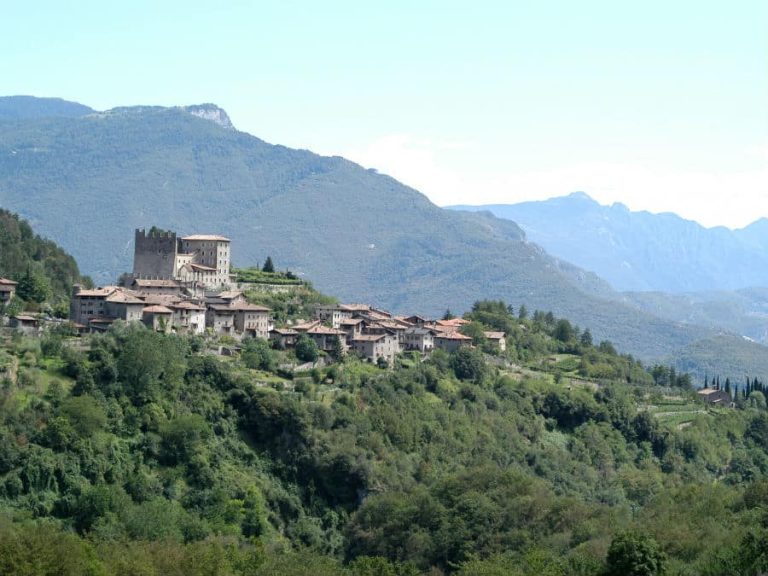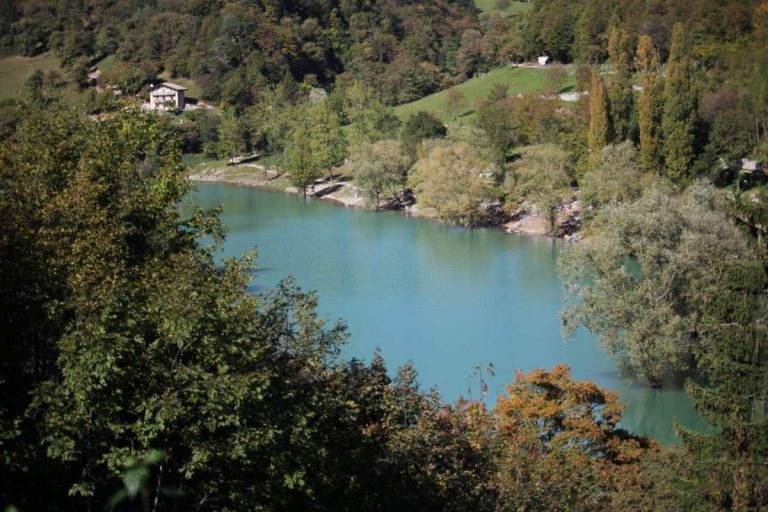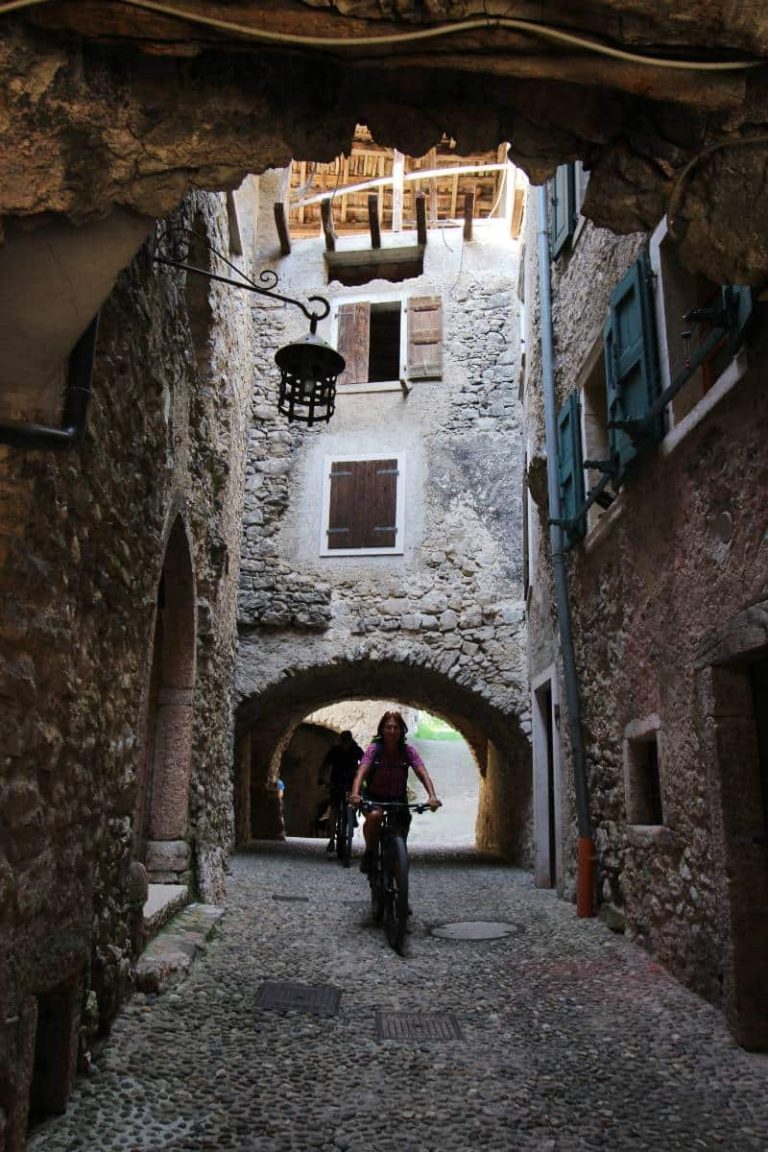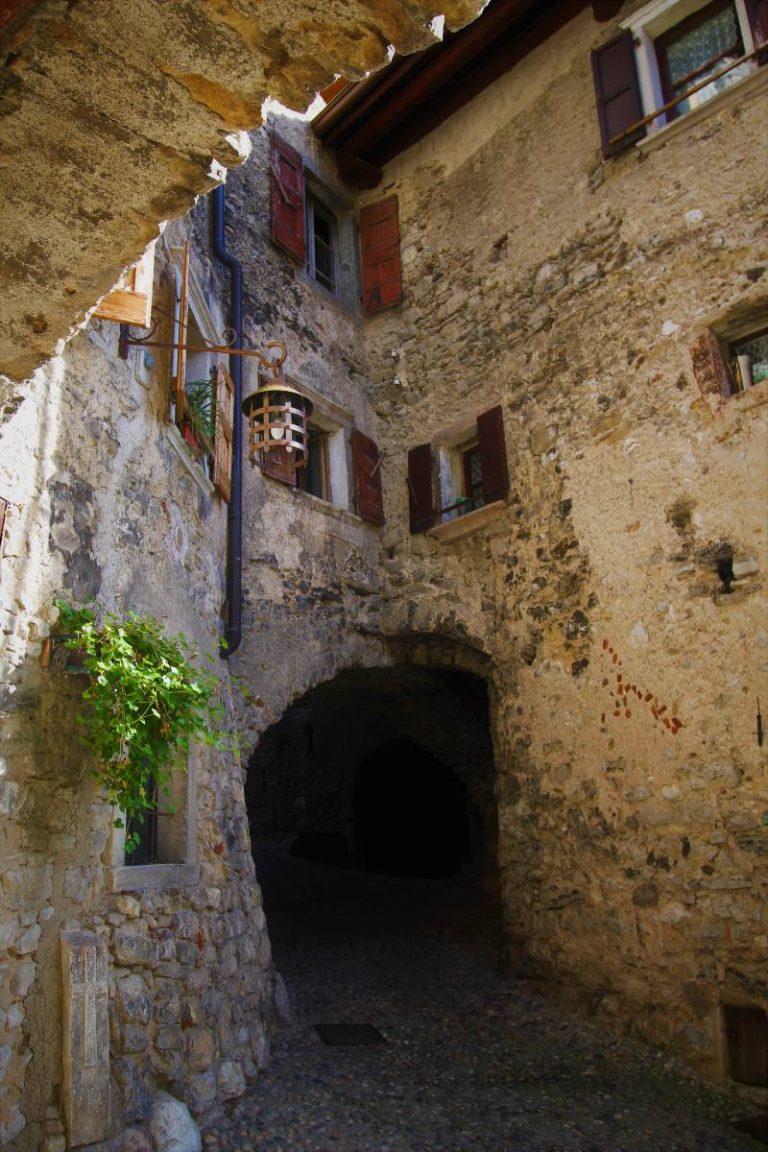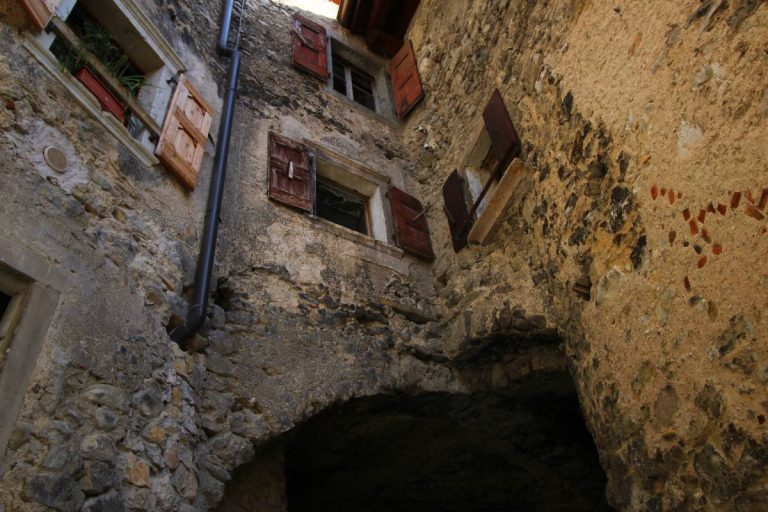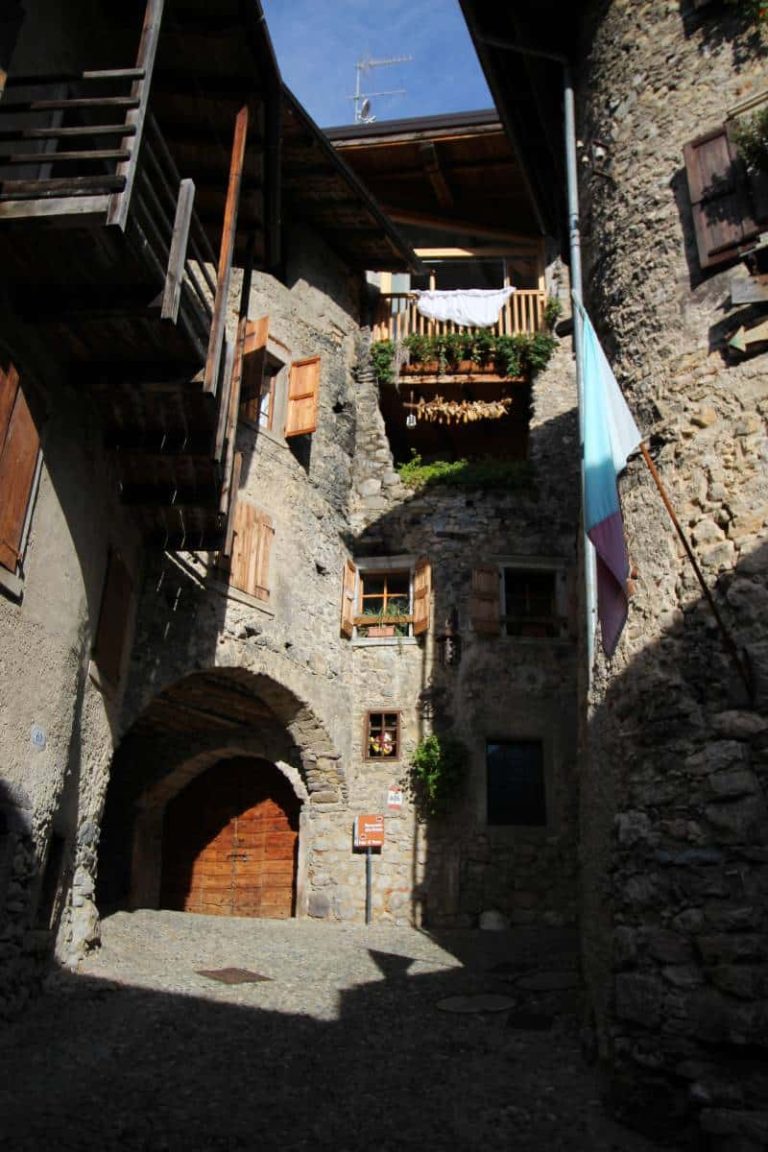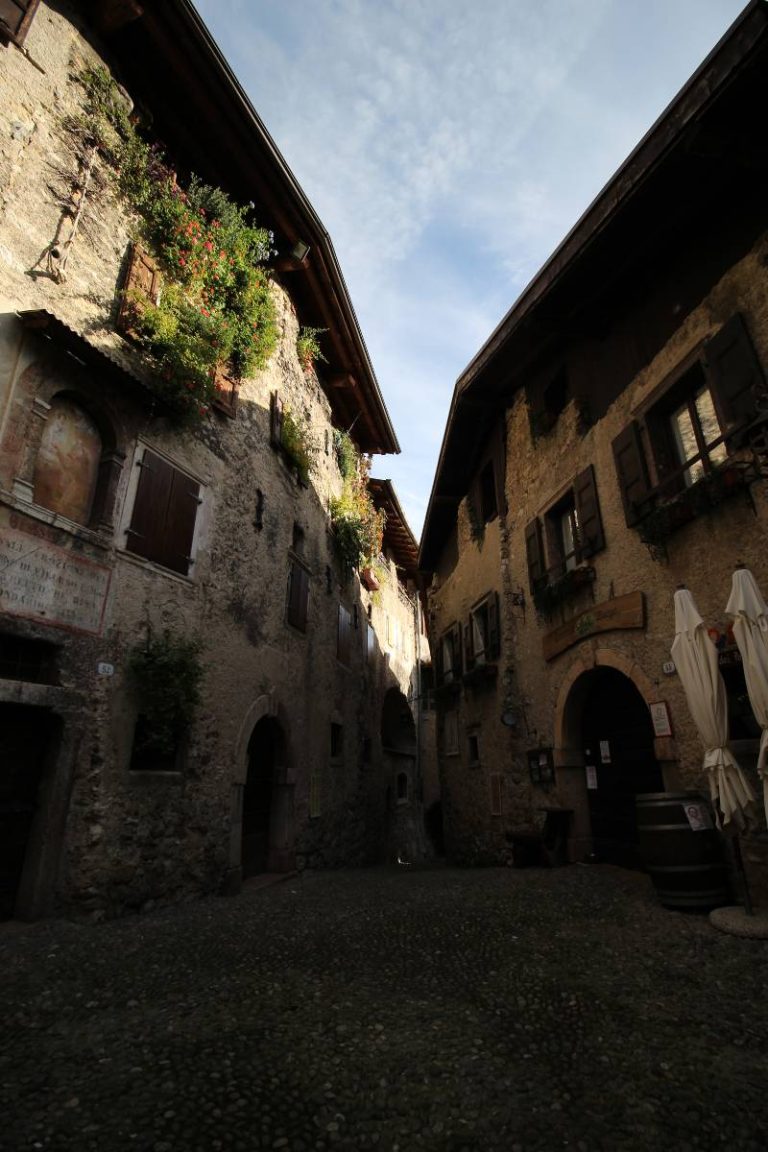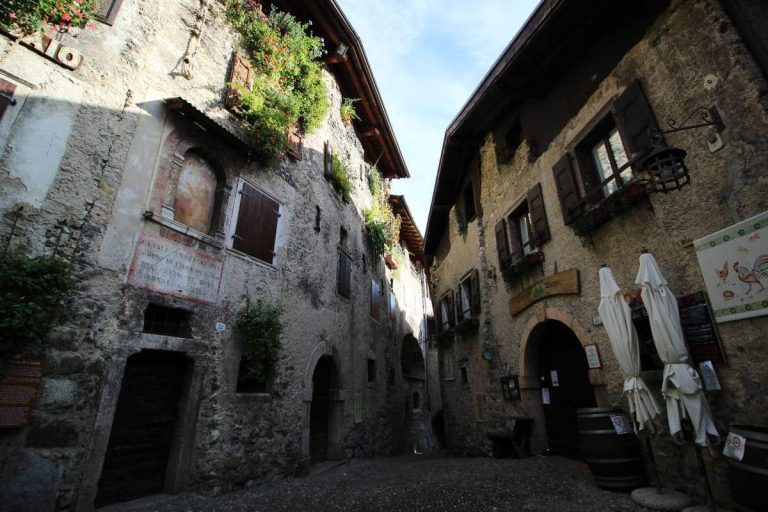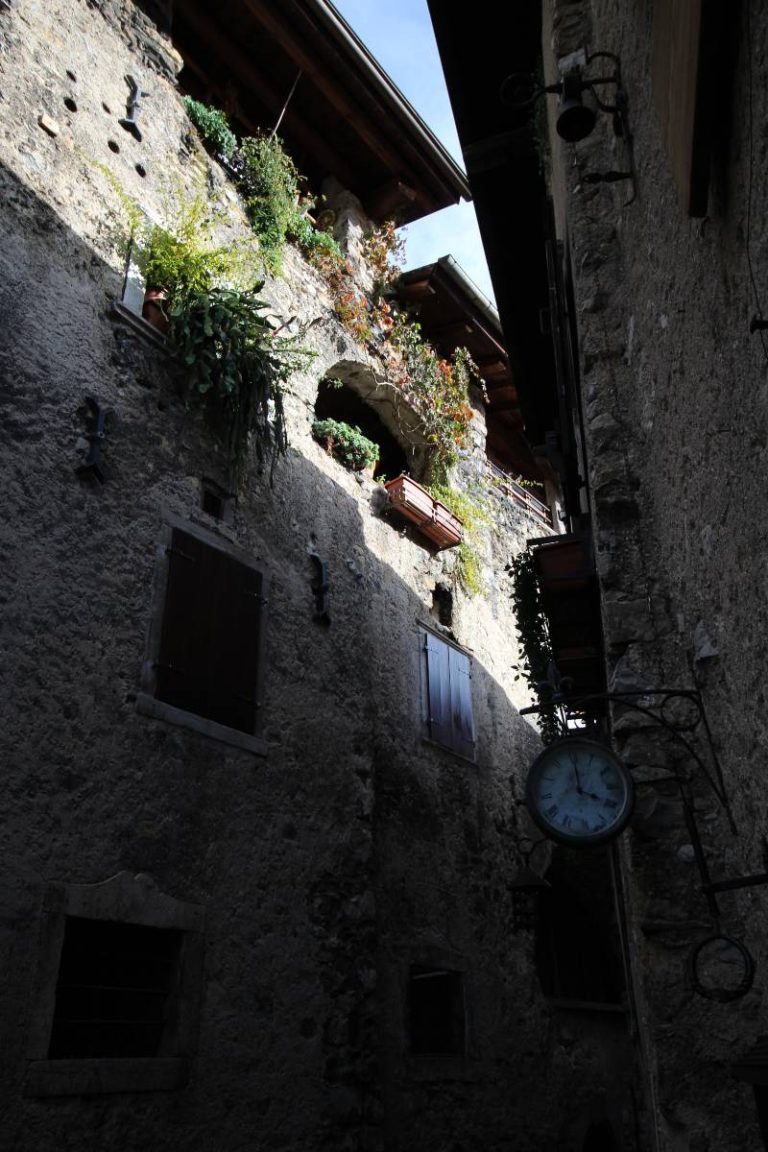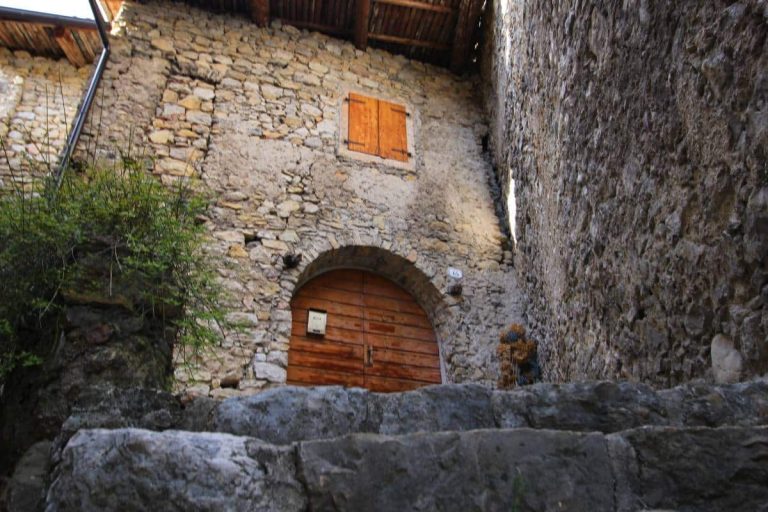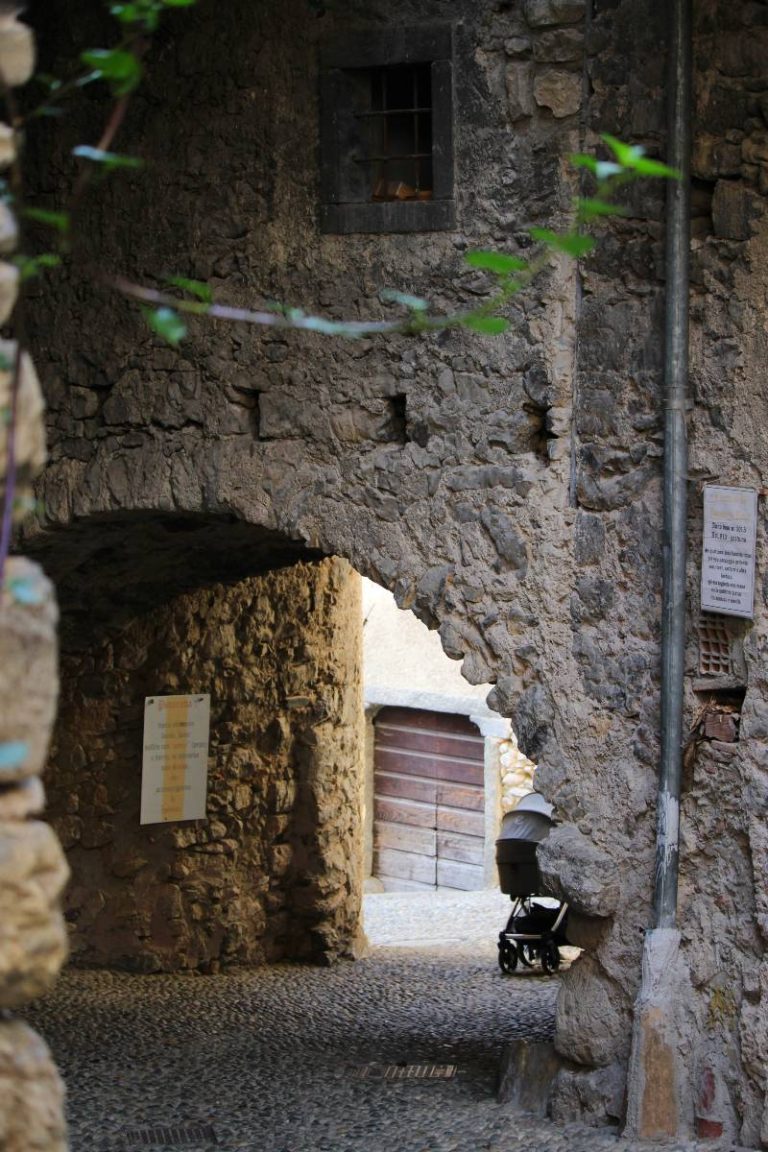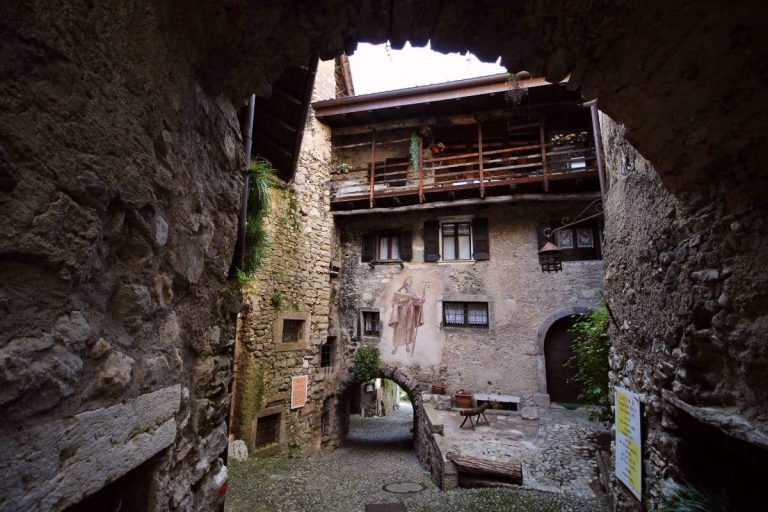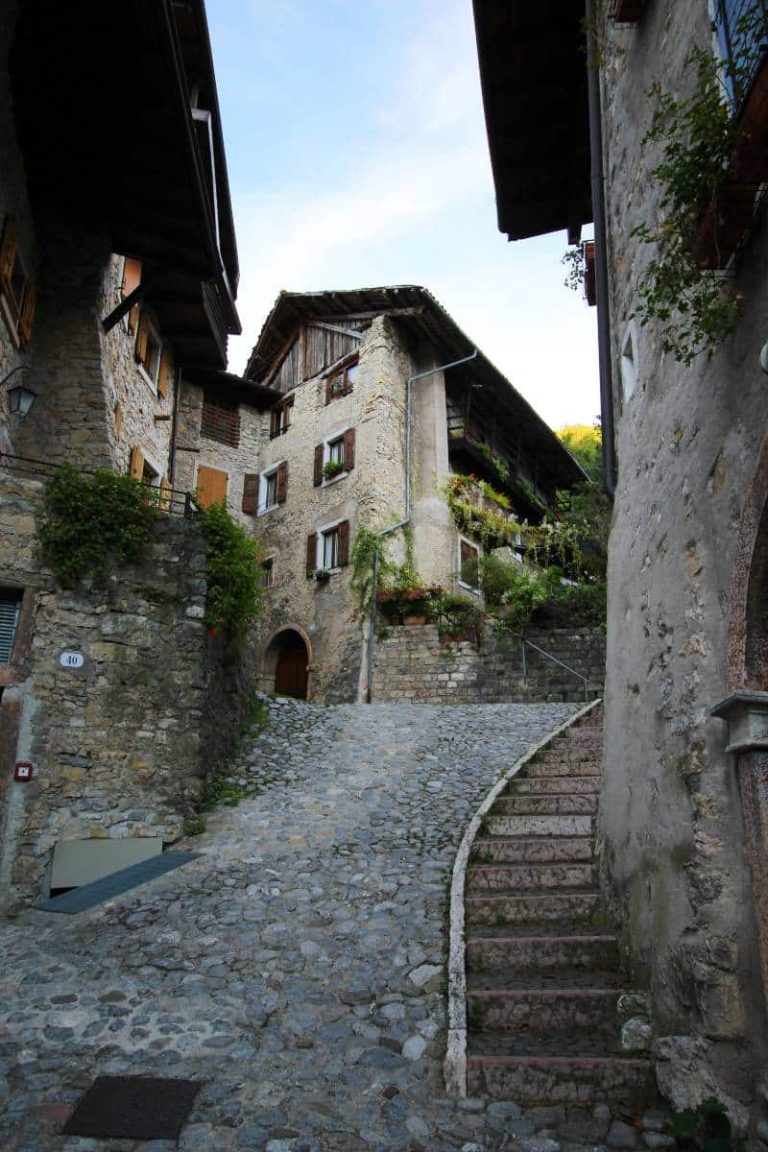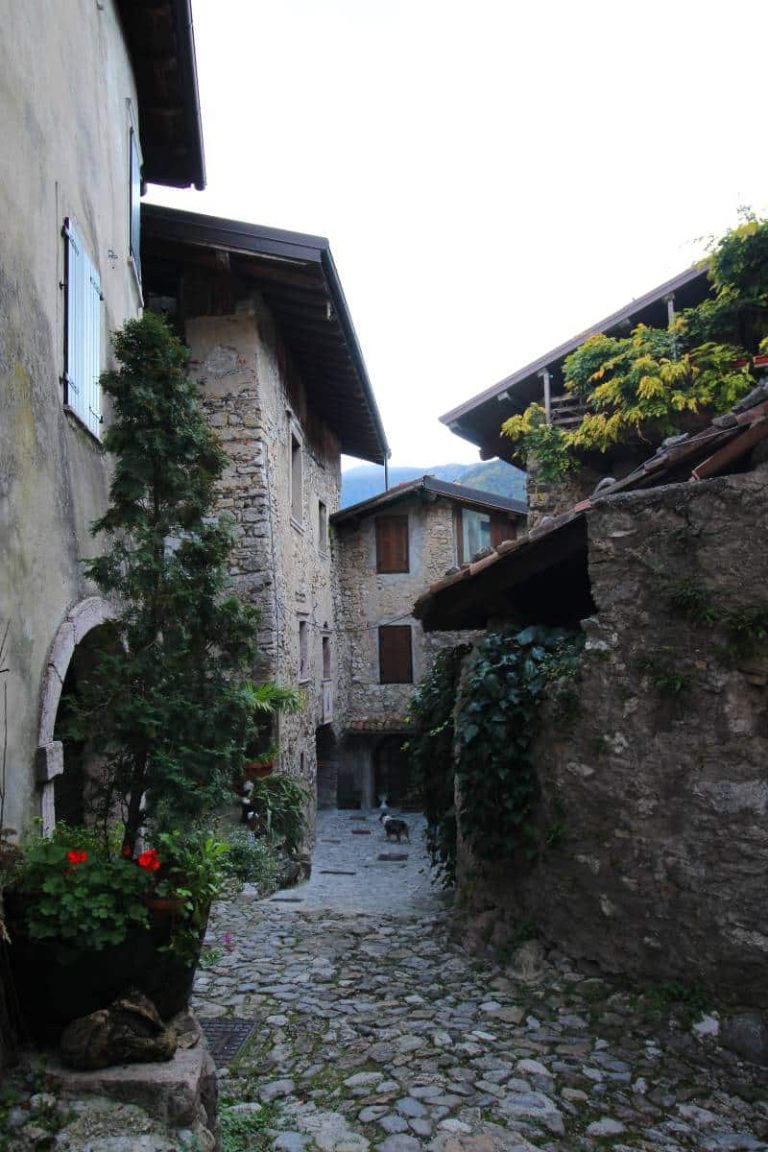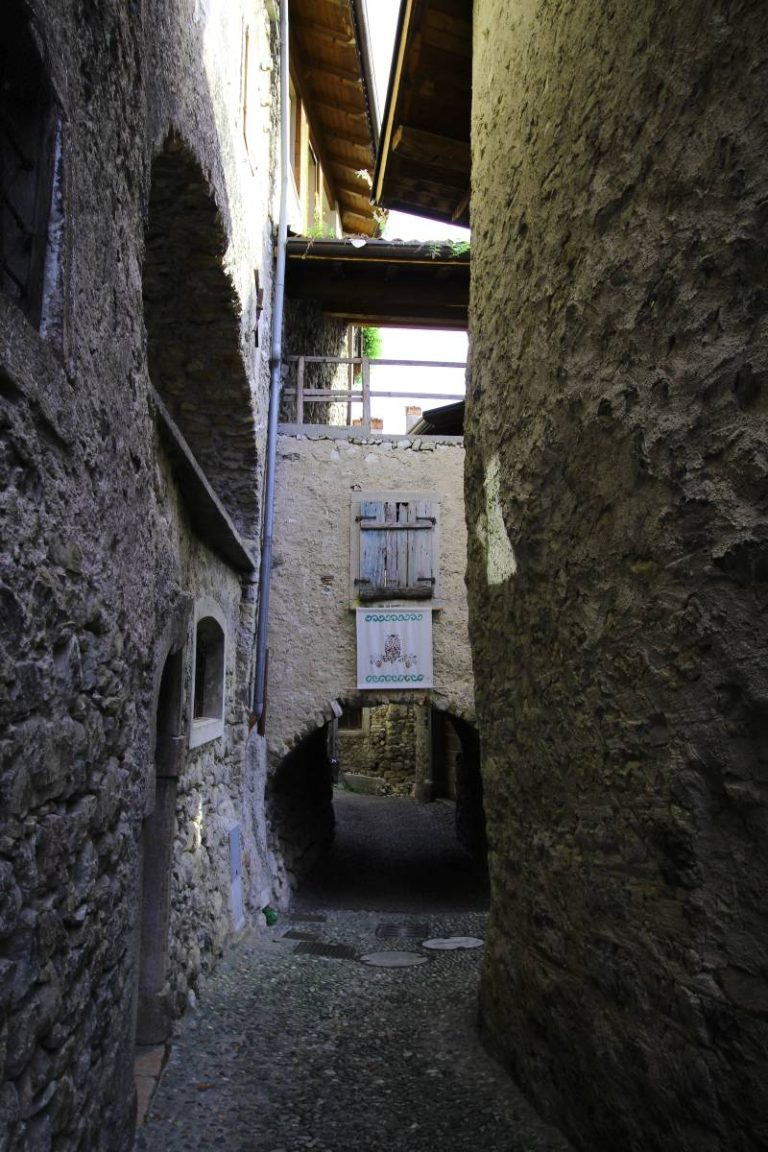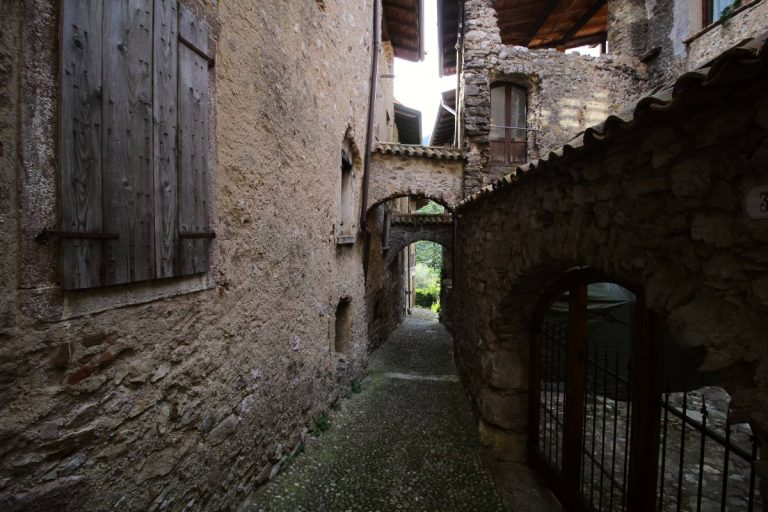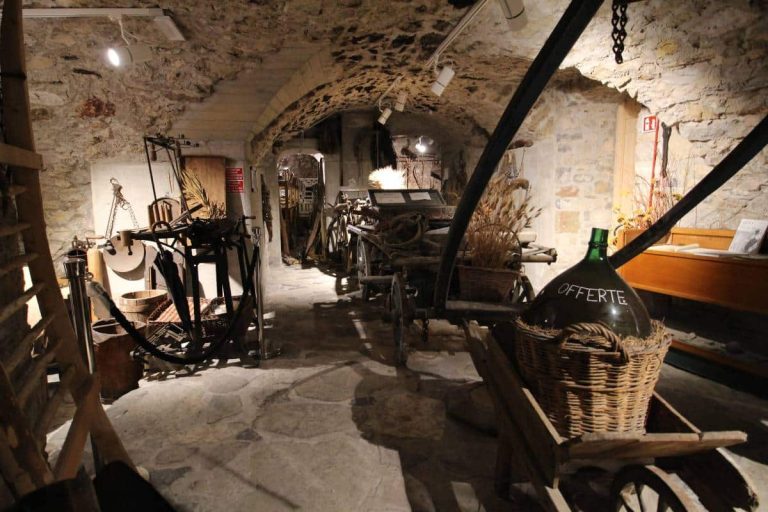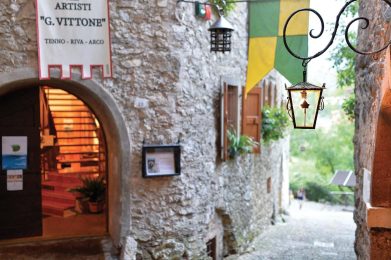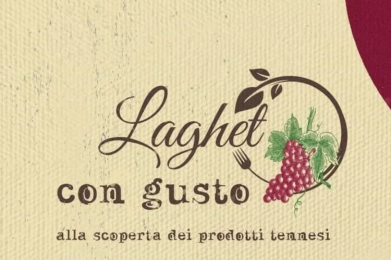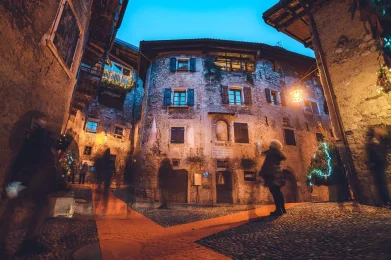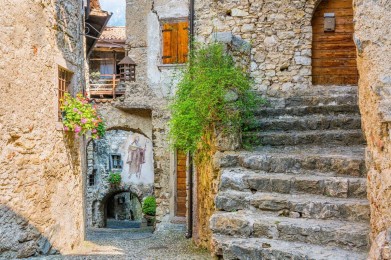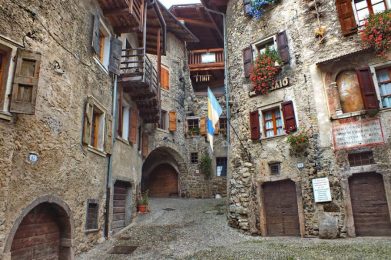Canale di Tenno is a medieval village of incomparable charm, nestled 428 meters above sea level in the hills of Garda Trentino. Listed among Italy's Most Beautiful Villages, it preserves intact its original urban layout, which originated around 1211: a tangle of cobblestone lanes and arches that wind among stone houses connected by characteristic windings, culminating in a charming little square. Here every corner tells stories of an ancient and living past, wrapped in an atmosphere of yesteryear.
Partially abandoned after World War I, Canale di Tenno experienced a rebirth after World War II thanks to the love of artists who were bewitched by it. First and foremost was Giacomo Vittone, a painter from Turin who found his muse in the village, so much so that he moved here and inspired the birth of the Artists' House dedicated to him. This space, now a cultural center, hosts exhibitions, courses and concerts, and continues to welcome artists from all over Europe, keeping the village's creative tradition alive.
Walking through its streets, one can admire facades decorated with modern frescoes, such as the one created by painter Gianni Longinotti on his own home, and breathe in the magical atmosphere of a place where time seems to stand still. Just outside the village, along the road to Villa Calvola, the monument "Le Vicinie"-four figures in dialogue-remembers the ancient rules of community management decided by the heads of families.
Today the hamlet is experiencing a new splendor, fueled by tourism attracted by nearby Lake Tenno and by events such as "Rustico Medioevo", the summer festival that transforms the narrow streets into a medieval stage, with music, costumes, storytellers and performances that bring visitors back to the atmosphere of the 12th century. In winter, however, it is the Christmas markets that enchant visitors with lights, scents and local traditions.
The village is also an ideal starting point for discovering the surrounding wonders, such as Tenno Castle, with its ancient coats of arms of the nobility, and the church of San Lorenzo, a treasure trove of extraordinary Romanesque and Gothic paintings dating back to the 12th century, precious testimonies to Trentino history and art. All framed by a breathtaking landscape that offers unforgettable views of the deep blue Lake Tenno, making Canale a timeless place where art, nature and tradition intertwine in a unique experience.


